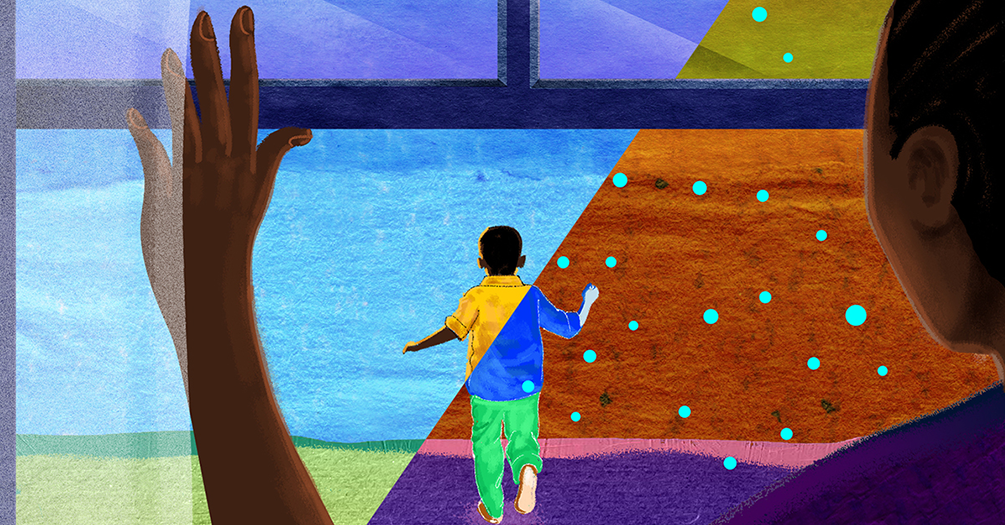The impact of air pollution on your health

Sara Adar
Associate Professor of Epidemiology and Global Public Health
I am fascinated with how the world around us—specifically the air we breathe—impacts our health. Growing up in the smog of Los Angeles, the haze was more than just a backdrop for my day-to-day activities; it was also an early lesson in environmental health that has become the focus of my career.
As a researcher and instructor, I use modern principles of epidemiology, environmental health, exposure science, and biostatistics to study the impacts of our environment, including air pollution, on our health.
Air pollution is important to think about because we are all obligatory breathers. We all need air to live—from the day we are born to the day we die- and our air contains contaminants that are harmful to our health. When we are experiencing high levels of pollution, like during wildfire events, we may be able to see the poor quality of our air but pollution is also present when it is invisible to us.
Exposures to air pollution, even at levels below our current regulatory standards, can have lasting effects on health. For example, in my research, I've seen how sustained exposure to dirty air can damage children's lungs and lead to plaque buildup in the arteries of adults. While this sometimes surprises people, it’s helpful to think about air pollution as being similar to smoking cigarettes. Although the exposure is much more diluted, we are still breathing in microscopic particles and gases that may originate from smoke from traffic or industry or other sources. When we inhale these pollutants, they can trigger a chain reaction in the body, similar to cigarette smoke. This may start with inflammation as a protective response but over time can lead to chronic illnesses as severe as heart disease. The smallest pollutants can pass into our bloodstream and travel to important organs in our bodies like our brains, leading to sometimes less expected outcomes like dementia. Notably, air pollution increases the risk of disease among all people but certain groups, like young children, older adults, and people with chronic diseases likely face even greater risks from these exposures.
Listen to "Breathing Easy: Navigating the Invisible Impact of Air Pollution" on Spreaker.
Even though air pollution levels have declined in the last several decades in the United States, those declines have not been the same everywhere and some neighborhoods still have high levels. Similarly, breathing in outdoor air is not the only cause of exposure. For example, children can experience high levels of exposure during their commutes to school if they ride very old diesel school buses.
Another area of my research examines the impact of school bus emissions on children’s health. Our findings present a clear message: Cleaner school buses equal healthier kids, who show up to school more and learn more. Therefore, I really must applaud the investments by the EPA and the government in helping school districts purchase newer and cleaner buses. Our findings suggest that their investments have improved the health of children, resulting in direct educational and economic benefits.
In addition to exposures from the transportation sector and other more traditional industrial sources of air pollution, we have recently seen the impact of wildfires on air quality. In some parts of the country, wildfires have emerged as a leading source of population exposure to air pollution. Our group recently demonstrated that the health impacts of these events may extend beyond the times when the air is thick with smoke and repeated exposures may increase the risk of dementia among older adults.
We found similar relationships with air pollution from agricultural activities where the application of neurotoxic pesticides are common, suggesting a compelling argument for a broader consideration of what constitutes an important pollution source for health.
We're all breathing in air pollution no matter where we live or what side of the political divide we land on, and we all experience the health impacts of those exposures.
Although we are learning that there are many health impacts of air pollution from both traditional and non-traditional sources, the silver lining is found in regulatory successes such as the National Ambient Air Quality Standards, which have significantly reduced pollution levels and contributed to the increased life expectancy of Americans.
As an eternal optimist, I often think about the many ways in which we can intervene to reduce population exposures and improve health. This will require a commitment to clean air, but the call to action is clear. Therefore, what I would love to see is that, as a society, we start to value clean air, and we approach this as a nonpartisan issue. We're all breathing in air pollution no matter where we live or what side of the political divide we land on, and we're all experiencing the health impacts of those exposures. In my dream world, our society would value clean air and protect health.
About the author

Sara Adar is an associate professor of epidemiology at the University of MichiganSchool of Public Health. Her research primarily focuses on the effects of air pollution and noise on healthy aging, with additional interestsin global health, extreme weather events, and intervention strategies to improve health.
